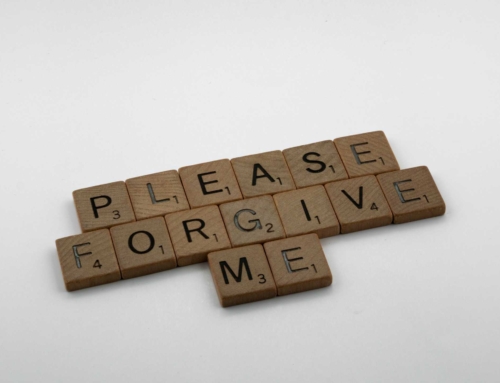From our youngest years, we have been informed about the danger of talking to strangers. Parents, teachers, and other care-giving adults caution us against the risks of harm that might come from beyond safe circles. However, the myth of stranger danger doesn’t always convey the other side of our experiences with abuse and neglect. Either way can produce insecure attachment.
 Too often, it is in our own homes and families that we encounter traumatic incidents that shape our childhoods and shift the trajectory of our lives. Wounded, we drag our trauma and its accompanying shame into other experiences and relationships as we mature and grow.
Too often, it is in our own homes and families that we encounter traumatic incidents that shape our childhoods and shift the trajectory of our lives. Wounded, we drag our trauma and its accompanying shame into other experiences and relationships as we mature and grow.
Sometimes, we normalize our pain, simply because we have no other experience to compare it against. Bits and pieces of our person snag on others, cutting them and injuring ourselves. We may want to connect, but because of a lack of warmth or empathy, our experiences have been marked by inconsistency.
We learn to adapt to insecure attachment by either having boundaries so inflexible that no one can gain our trust or so loose that we don’t safeguard ourselves well against otherwise obvious threats. Our coping and ability to make sound judgments about trusting others results in diminished feelings of safety and security in almost any relationship that we encounter.
For many, it isn’t that we intend to be distrustful, untrustworthy, or unable to commit to friendships and relationships. We are simply living out of a place of past pain that has yet to be resolved. Much like the parents or caretakers who impacted our trauma history, we are doing the best we can with the tools we have.
While this is not God’s desire or design for individuals or families, it does happen, and we need to have a way to recover the broken pieces of our psyche and our soul. We need to understand what insecure attachment means and how to begin a healing journey that will bring mental, emotional, and spiritual wholeness.
Beloved, I pray that all may go well with you and that you may be in good health, as it goes well with your soul. – 3 John 1:2, ESV
Understanding insecure attachment
Attachment issues, as the name suggests, have to do with our ability to establish healthy connections characterized by trust. In many relationships that are founded on mutual respect, affection, and kind regard, the individuals, whether family, friend, or partner experience a sense of safety, support, and security in the relationship.
This is essential for human interactions to thrive. However, there is a downside to poor attachment as one might imagine. It destroys trust in future relationships because the mistrust resides in us.
 In children, for example, insecure attachment can make for challenging interactions with peers and/or adults in their lives. We can see it manifest in aggressive behaviors as well as children who withdraw from interactions with others and are more reticent to engage.
In children, for example, insecure attachment can make for challenging interactions with peers and/or adults in their lives. We can see it manifest in aggressive behaviors as well as children who withdraw from interactions with others and are more reticent to engage.
For both, we see that it impacts kids socially, making it challenging for them to use creative problem-solving with peers and regulate their emotions without having a tantrum. As adults, we don’t necessarily grow out of the behaviors. They take shape differently in our lives, still reflecting an inability to form and sustain trusting relationships with friends or romantic partners.
Unfortunately, we may be engaging in unhealthy behaviors that isolate us from others or push them away. Walls imprison, keeping us in and others out. They insulate us from emotional intimacy and block us from receiving the goodness of God, even through the gift of relationship. While we believe that we are protecting ourselves, in actuality, we deepen our sense of loneliness and depression when we cut ourselves off from our Source and what He calls good.
When we reject kindness and connection with others, we dismiss God’s Hands and Heart. While He often restores us with a loving touch through our personal experience with Him in prayer, worship, stillness, or other activity, He often longs to bless us through our fellowship with kingdom sisters and brothers.
When we box ourselves in from the potential for meaningful relationships, we limit our capacity to receive the blessing of our inheritance, which is treasured fellowship with others. God wants to give us good gifts, and often they come through His extended hands and feet in other people in the Body of Christ.
Addressing insecure attachment
As believers, it may feel conflicting for us to experience insecure attachment, when the core of our faith is belonging in an intimate relationship with God. In God, we live, move, and have our being, and we abide as one with Him. Not only do we belong to Him, but we are also part of a Body comprised of other believers.
In some ways, it can seem exhilarating to feel as if we have found people for connection. However, it can also be overwhelming and frustrating to yearn for connection, yet continually be stymied by a lack of trust, underdeveloped social skills, and an inability to foster the intimacy that leads to deeper relationships.
With God all things are possible, but that doesn’t mean that we need to walk through healing experiences that will transform us mentally and emotionally (Matthew 19:26). Nothing in our past or present can defy the partnership we make with God concerning what He wants to do in our lives.
 We can initiate a powerful first step to surrender our vulnerabilities to Him. With the same faith that brought us into the family of God, we can trust Him to be the loving, yet consistent God that He has always been (Hebrews 13:8).
We can initiate a powerful first step to surrender our vulnerabilities to Him. With the same faith that brought us into the family of God, we can trust Him to be the loving, yet consistent God that He has always been (Hebrews 13:8).
While we may not fully know or understand that part of His character, He is faithful and willing to heal. He wants to do a complete work to repair the fragmented parts of our lives and restore us to better than before.
Jesus makes everything new, and although it doesn’t occur overnight, we can rely on His Spirit to be with us (Revelation 21:5; 2 Corinthians 5:17). The Holy Spirit will comfort and counsel us in ways that will help us grow in faith, renew our minds, and change our behavior (John 14:26; Romans 12:2).
While we may have lacked the kind of early start that would have established a pattern for healthier relationships, it isn’t too late to begin or too far gone to resume. Although we didn’t have a model for connection, we can learn strategies and techniques to engage with others.
It will require stretching into another dimension of relationship as we build the capacity to grow with others, whether family, friends, or those in our faith circles. However, God created us for community and we are graced to learn to live “fitly joined” with others in Christ (Ephesians 4:16).
But speaking the truth in love, we are to grow up in all aspects into Him who is the head, that is, Christ, from whom the whole body, being fitted and held together by what every joint supplies, according to the proper working of each individual part, causes the growth of the body for the building up of itself in love. – Ephesians 4:15-16, NASB2020
Next steps
Therapy is a good place to begin addressing the seen and the unseen effects of insecure attachment. We can pause here with God to embrace and establish a new chapter. The God who is both Beginning and End understands what we have survived to arrive at this point.
Yet, He is unwilling to allow us to park here without the healing and resolution that He desires to bring. We can offer our present and past pain, welcoming Him to finish the work that He has begun in us (Philippians 1:6).
It may take some time to navigate and sort out the issues that have resulted in an insecure attachment. However, God is eternal, patient, and willing to help us unpack and overcome what threatens to hold us back. Today is a new day to embrace the opportunity that awaits on this site. Research and reach out to one of the staff who will help you schedule an appointment with a therapist for your next step.
“Family Picnic”, Courtesy of Getty Images, Unsplash.com, Unsplash+ License; “Watching the Sunset”, Courtesy of Cody Black, Unsplash.com, CC0 License; “Heart Hands”, Courtesy of Kristina Litvjak, Unsplash.com, CC0 License; “Tree Tunnel”, Courtesy of Studio Dekorasyon, Unsplash.com, CC0 License










